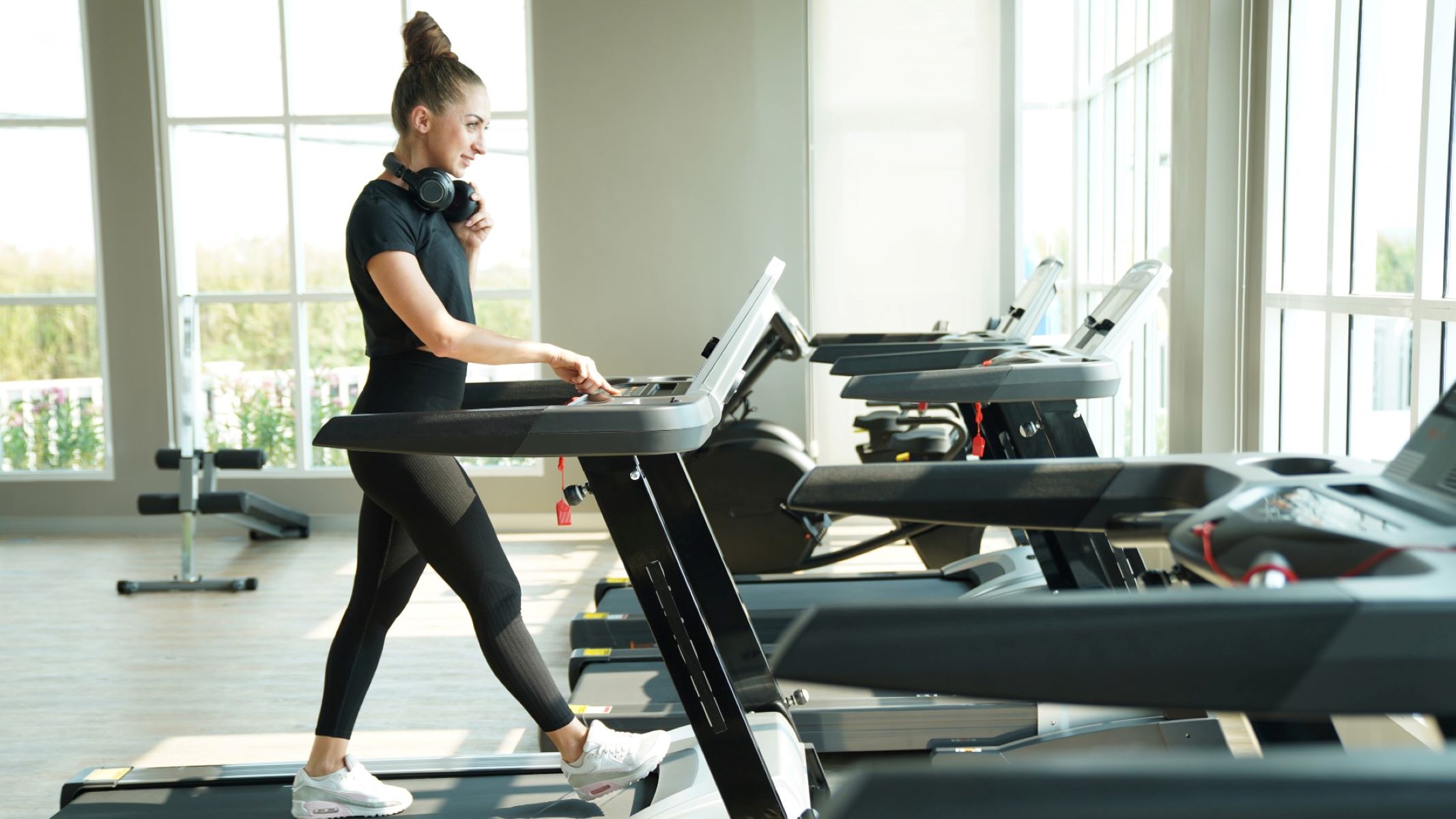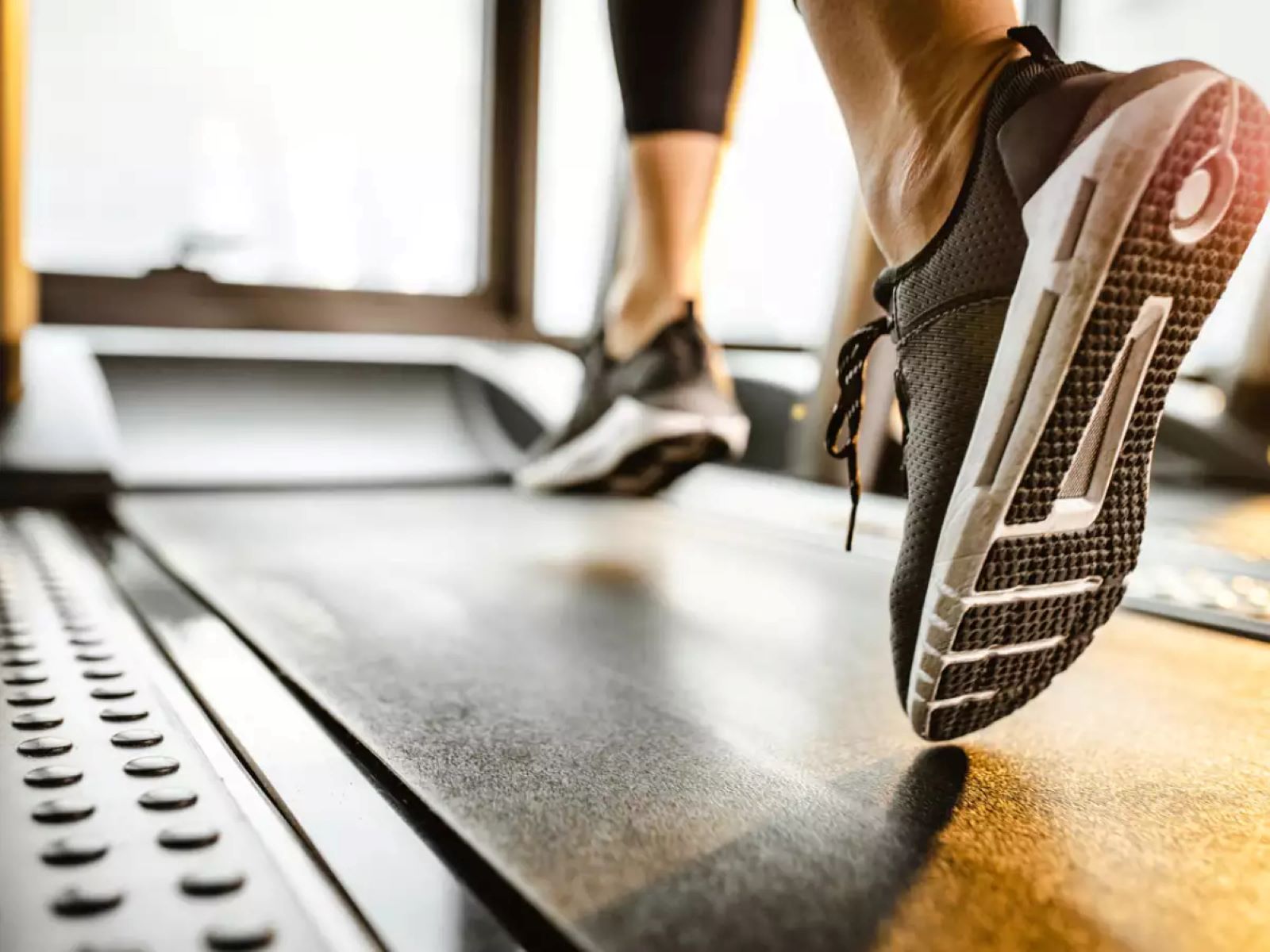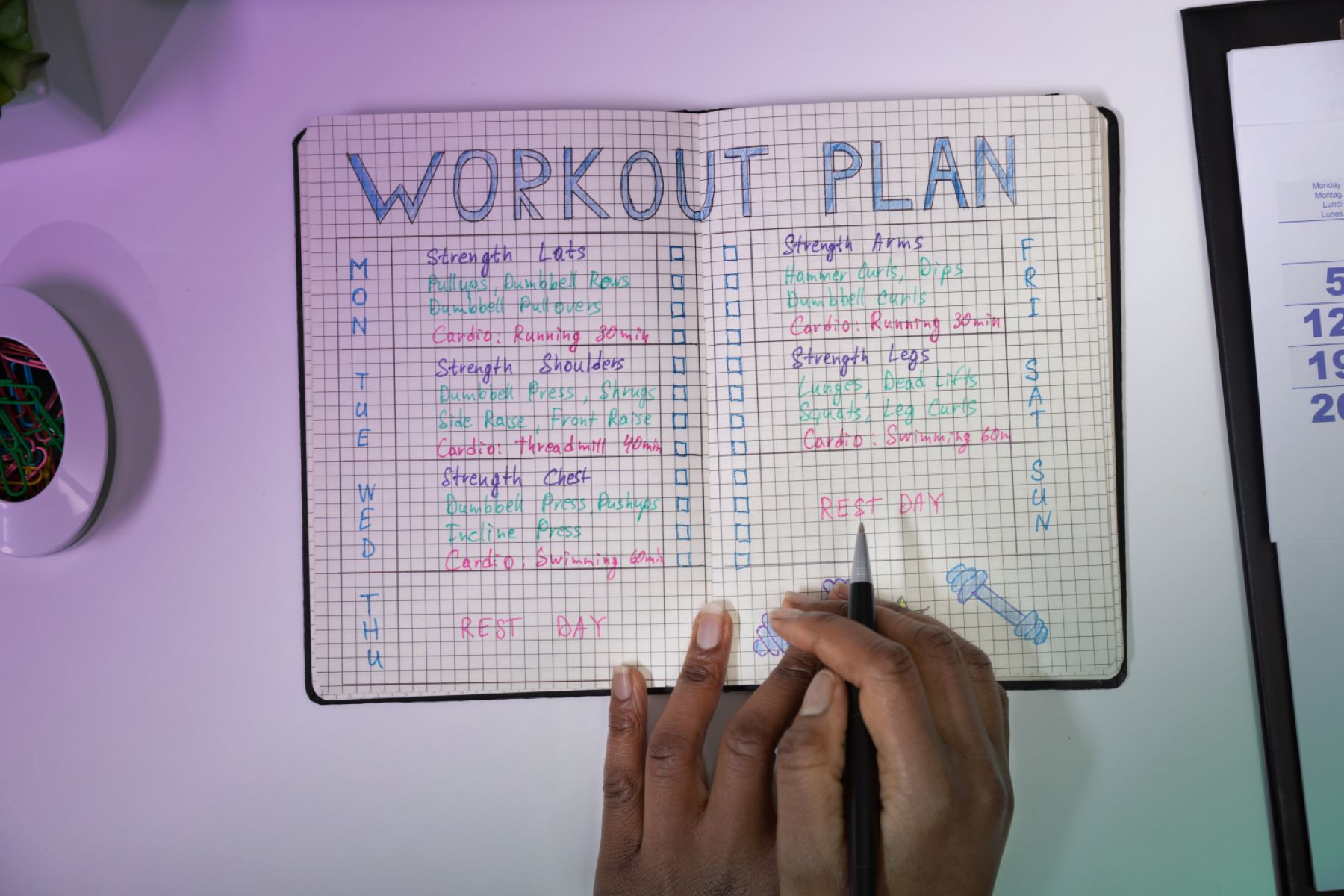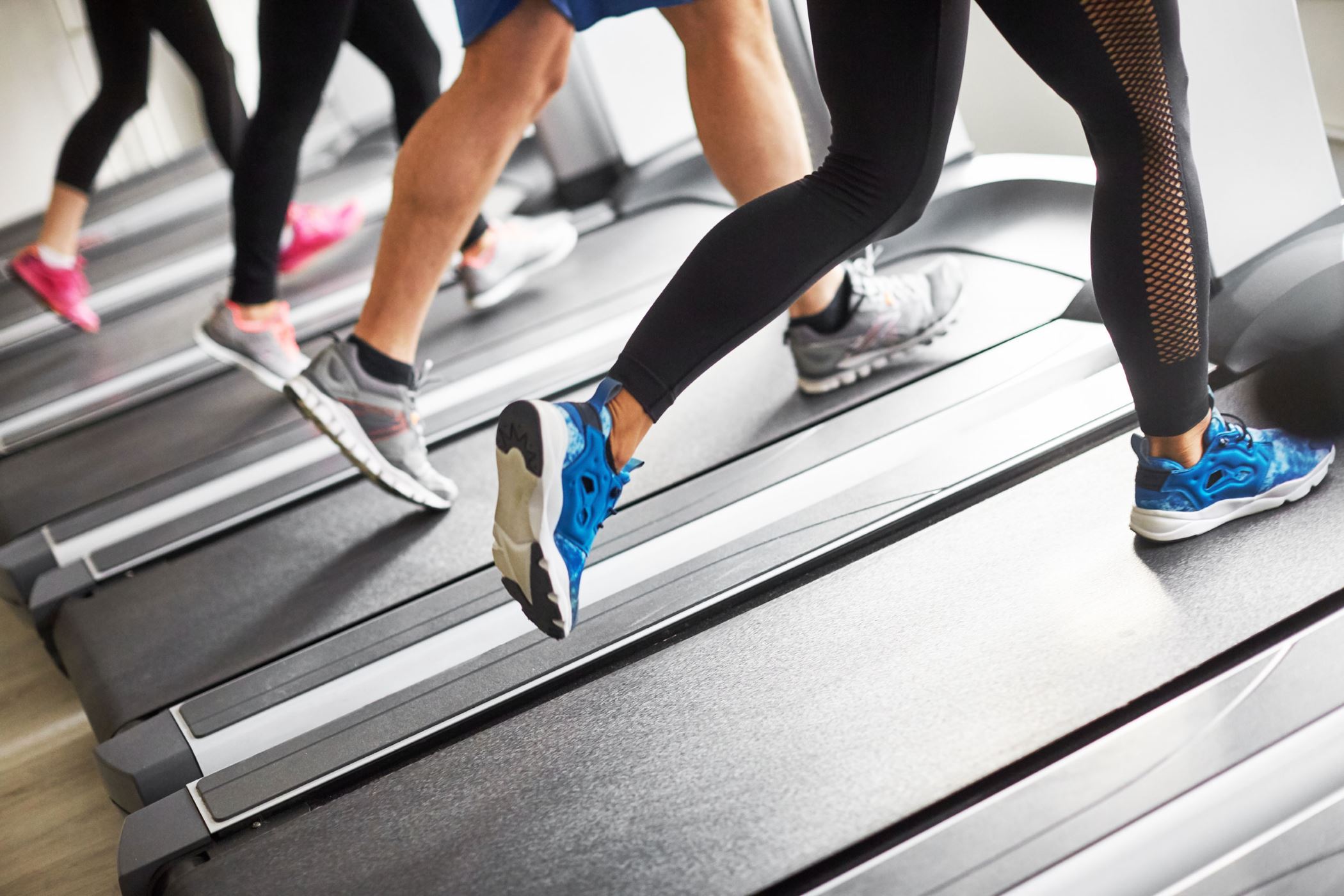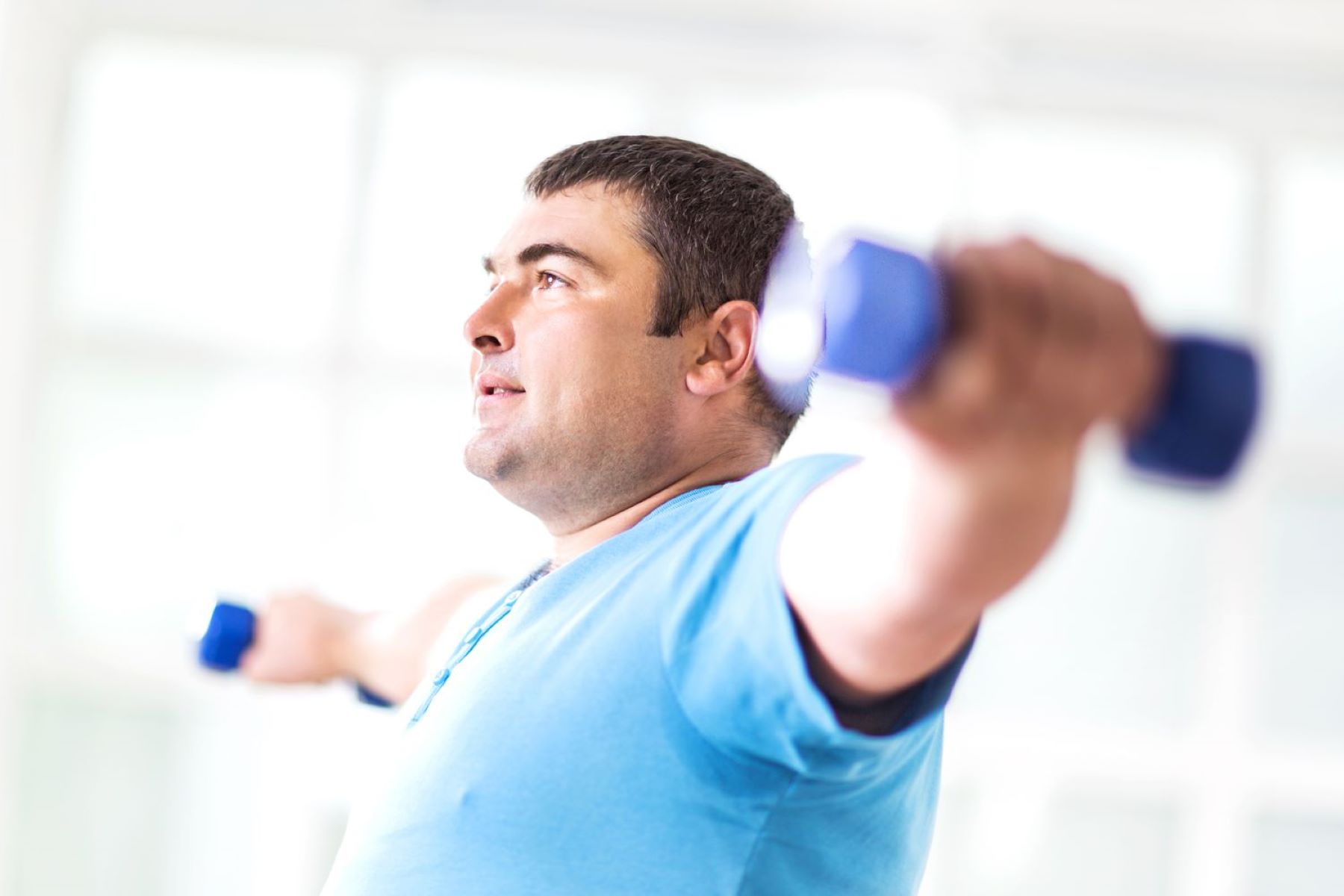

Featured
Best Workout To Lose Weight
Modified: January 22, 2024
Learn effective workout routines and tips on how to lose weight with our featured workouts. Get started on your weight loss journey today!
Introduction
Welcome to the world of weight loss workouts! If you’re looking to shed those extra pounds and get in shape, a well-designed workout routine can be your secret weapon. Exercise not only helps you burn calories, but it also boosts your metabolism, improves your overall fitness, and positively impacts your mental well-being.
However, embarking on a weight loss journey can be overwhelming. With so many workout options available, it’s essential to find a routine that suits your needs, preferences, and fitness level. In this article, we will guide you through the process of creating an effective weight loss workout routine.
Before diving into the specifics, it’s essential to understand that weight loss is a holistic process that involves a combination of regular exercise, a balanced diet, and healthy lifestyle choices. No single workout routine can magically make the pounds disappear overnight. Instead, consistency and commitment are key to achieving sustainable results.
When creating your weight loss workout routine, there are a few factors to consider. First and foremost, you need to set realistic and achievable goals. Whether you’re aiming to lose a specific amount of weight or simply want to improve your fitness level, having a clear target will help you stay motivated and on track.
Next, you’ll need to choose the right type of workout for weight loss. While any form of exercise can contribute to calorie burn, certain workouts are more effective than others. The ideal weight loss routine combines a variety of exercises that target different muscle groups and elevate your heart rate.
In this article, we’ll explore different types of workouts that can aid in weight loss, such as cardiovascular exercises, strength training, high-intensity interval training (HIIT), and flexibility exercises. We’ll also provide tips on how to structure your workouts, track your progress, and ensure overall success.
Remember, losing weight and getting in shape is a journey, and it’s important to enjoy the process. Find ways to make your workouts enjoyable, such as listening to inspiring music, joining group classes, or exploring outdoor activities. With determination, consistency, and the right workout routine, you’ll be on your way to achieving your weight loss goals.
Setting Your Weight Loss Goals
Before you begin any weight loss journey, it’s important to set clear and realistic goals. Goals provide you with a sense of direction, help you stay motivated, and give you something to work towards. When setting your weight loss goals, keep the following tips in mind:
- Be specific: Rather than setting a vague goal like “lose weight,” define a specific target. For example, aim to lose 10 pounds or drop a clothing size.
- Set achievable targets: While it’s tempting to aim for rapid weight loss, it’s important to set realistic goals. Losing 1-2 pounds per week is considered a healthy and sustainable rate of weight loss.
- Consider non-scale victories: Weight loss isn’t just about the numbers on the scale. Think about other ways to measure your progress, such as increased energy levels, improved fitness performance, or fitting into your favorite pair of jeans.
- Create short-term and long-term goals: Break down your overall weight loss goal into smaller, manageable targets. This allows you to celebrate achievements along the way and stay motivated for the long haul.
- Make your goals measurable: Set specific milestones or markers to track your progress. For example, aim to complete a 5K run within a certain timeframe or increase the number of reps or weight lifted in your strength training exercises.
Remember, weight loss is a personal journey, and what works for one person may not work for another. Your goals should be tailored to your own needs, preferences, and body type. It’s also important to prioritize your health and well-being over achieving a specific number on the scale.
Once you’ve set your weight loss goals, it’s time to choose the right workout routine to help you achieve them. The next section will guide you through the different types of workouts that can aid in weight loss and provide the best results.
Choosing the Right Workout Routine
When it comes to choosing the right workout routine for weight loss, it’s important to find a balance between cardiovascular exercises, strength training, and flexibility exercises. Each type of workout offers unique benefits that contribute to your overall fitness and help you achieve your weight loss goals.
Cardiovascular exercises, also known as cardio, are essential for burning calories and boosting your metabolism. These activities elevate your heart rate and increase oxygen consumption, helping you shed those extra pounds. Some popular forms of cardio exercises include running, cycling, swimming, and dancing.
Strength training exercises are crucial for building lean muscle mass. When you have more muscle, your body burns more calories even at rest, which can aid in weight loss. Incorporating resistance training, such as lifting weights, using resistance bands, or doing bodyweight exercises, helps tone and sculpt your body while increasing your metabolism.
In addition to cardiovascular and strength training exercises, it’s important to include flexibility and stretching exercises in your routine. Improving your flexibility not only enhances your physical performance but also reduces the risk of injuries during workouts. Activities like yoga, Pilates, or simple stretching routines can help increase flexibility and promote relaxation.
When choosing a workout routine, consider your preferences, fitness level, and time commitment. It’s essential to select activities that you enjoy and can realistically stick to in the long term. Whether you prefer to exercise at a gym, outdoors, or in the comfort of your own home, there are plenty of options available to suit your needs.
Additionally, varying your workouts keeps things interesting and prevents boredom. You can mix different forms of cardio, incorporate different strength training exercises, or try new fitness classes to challenge your body and prevent plateauing.
Remember, consistency is key when it comes to reaping the benefits of your workout routine. Aim for at least 150 minutes of moderate-intensity aerobic activity or 75 minutes of vigorous activity per week, in addition to two or more days of strength training. Consult with a fitness professional if you’re unsure about the intensity or frequency of your workouts.
In the next sections, we’ll explore specific exercises and workout routines that can maximize your weight loss efforts and help you achieve optimal results.
Cardiovascular Exercises for Weight Loss
Cardiovascular exercises are an essential component of any weight loss workout routine. These exercises elevate your heart rate, increase calorie burn, and improve cardiovascular fitness. Here are some popular cardiovascular exercises that can help you achieve your weight loss goals:
- Running or Jogging: Running or jogging is a high-impact aerobic exercise that can torch calories and improve your cardiovascular endurance. Whether you choose to run outdoors or on a treadmill, start with a comfortable pace and gradually increase intensity and duration over time.
- Cycling: Cycling is a low-impact exercise that targets your leg muscles and provides a great cardiovascular workout. You can cycle outdoors or use a stationary bike at the gym. Increase resistance or try interval training to challenge your body and maximize calorie burn.
- Swimming: Swimming is a full-body workout that engages multiple muscle groups while being gentle on your joints. It’s a great option for people with joint pain or those looking for a low-impact exercise. Swim laps, try water aerobics, or join a swimming class to reap the benefits.
- Dancing: Dancing is a fun and effective way to get your heart rate up. Whether it’s Zumba, hip-hop, salsa, or any other dance style, moving to the rhythm can burn calories and improve coordination. Join a dance class or follow an online tutorial to groove your way to weight loss.
- Jumping Rope: Jumping rope is a simple yet highly effective cardio exercise. It elevates your heart rate, improves coordination, and engages multiple muscles. A few minutes of jumping rope each day can significantly contribute to your weight loss efforts.
- HIIT (High-Intensity Interval Training): HIIT involves alternating between short periods of intense exercise and brief recovery periods. It’s an efficient way to burn calories and boost your metabolism. Incorporate exercises like burpees, mountain climbers, squat jumps, and high knees to create a challenging HIIT workout.
The key to effective cardiovascular exercises is to choose activities that you enjoy and can sustain over time. Aim for at least 150 minutes of moderate-intensity aerobic activity or 75 minutes of vigorous activity each week. Mix different forms of cardio to keep your workouts exciting and prevent monotony.
Remember to warm up before starting your cardio session and cool down afterward to prevent injuries. Start with shorter durations and gradually increase the intensity and duration as your fitness level improves. Stay hydrated during your workouts and listen to your body’s signals to avoid overexertion.
In the next section, we’ll explore strength training exercises that can complement your cardio routine and help you build lean muscle mass.
Strength Training Exercises for Weight Loss
Incorporating strength training exercises into your weight loss workout routine is crucial for building lean muscle mass, increasing your metabolism, and achieving optimal results. Here are some effective strength training exercises that can aid in weight loss:
- Weightlifting: Weightlifting, using dumbbells, barbells, or resistance machines, is an excellent way to build strength and burn calories. Focus on compound exercises that target multiple muscle groups, such as squats, deadlifts, bench press, and rows. Start with lighter weights and gradually increase as you become more comfortable.
- Bodyweight Exercises: You don’t always need equipment to do strength training exercises. Bodyweight exercises utilize your own weight to provide resistance. Include exercises like push-ups, squats, lunges, planks, and burpees in your routine for a challenging full-body workout.
- Resistance Bands: Resistance bands are portable and versatile tools that can provide resistance for strength training exercises. They come in various levels of resistance, allowing you to gradually progress as you get stronger. Incorporate exercises like bicep curls, overhead presses, lateral raises, and glute bridges using resistance bands.
- Pilates: Pilates focuses on strengthening and toning the core muscles, improving posture, and enhancing flexibility. It incorporates exercises that engage the abdominal muscles, back, hips, and legs. Join a Pilates class or follow online tutorials to benefit from this low-impact, high-intensity workout.
- Yoga: While yoga is known for its flexibility benefits, it also includes strength-building poses. Certain yoga styles, such as power yoga or vinyasa flow, incorporate continuous movement and challenging poses that can help build strength and promote weight loss.
When incorporating strength training into your weight loss routine, aim for two to three sessions per week, targeting all major muscle groups. Allow for rest days between sessions to allow your muscles to recover and grow. Increase the intensity, repetitions, or weights gradually as you become more comfortable with your exercises.
Remember, building muscle is essential for long-term weight loss because muscle burns more calories at rest compared to fat. While cardio exercises help burn calories during the workout, strength training boosts your metabolism, leading to continuous calorie burn even after you’re done exercising.
Proper form is crucial when performing strength training exercises to prevent injuries. If you’re new to weightlifting or unsure about proper technique, consider consulting a personal trainer who can guide you and ensure you’re performing the exercises correctly.
In the next section, we’ll discuss a full-body workout routine that combines cardio and strength training exercises to maximize your weight loss efforts.
Full Body Workout Routine
A full body workout routine is an effective way to engage all major muscle groups, burn calories, and promote overall strength and fitness. By incorporating both cardiovascular and strength training exercises, you can create a well-rounded workout that targets your entire body. Here’s a sample full body workout routine:
- Warm-Up: Begin with 5-10 minutes of light cardio, such as jogging or jumping jacks, to warm up your muscles and increase your heart rate.
- Cardiovascular Exercise: Perform 20-30 minutes of moderate-intensity cardio exercise, such as running, cycling, or dancing, to elevate your heart rate and burn calories.
- Strength Training: Include compound exercises that target multiple muscle groups. Aim for 2-3 sets of 8-12 repetitions for each exercise. Some examples include:
- Squats: Target your lower body, specifically your quadriceps, hamstrings, and glutes.
- Push-Ups: Engage your chest, shoulders, and triceps while also activating your core muscles.
- Lunges: Work your legs and glutes while improving balance and stability.
- Dumbbell Rows: Strengthen your back muscles and improve posture.
- Overhead Press: Focus on your shoulder muscles and upper body strength.
- Core Exercises: Incorporate exercises that engage your abdominal muscles and strengthen your core. This can include exercises like planks, Russian twists, or bicycle crunches.
- Flexibility Exercises: Finish your workout with 5-10 minutes of stretching exercises to improve flexibility and promote muscle recovery.
Perform this full body workout routine 2-3 times per week, allowing at least one day of rest between sessions to give your muscles time to recover. As you progress, you can increase the intensity or duration of the cardio exercises and gradually increase the weights used for strength training.
Remember to listen to your body and modify exercises as needed. If you’re new to exercise or have any underlying health conditions, it’s advisable to consult with a fitness professional before starting any new workout routine.
By combining cardio, strength training, and flexibility exercises, this full body workout routine provides a comprehensive approach to weight loss and overall fitness. Next, we’ll explore the benefits of high-intensity interval training (HIIT) and how you can incorporate it into your workout routine.
High-Intensity Interval Training (HIIT)
High-Intensity Interval Training (HIIT) is a popular and effective workout method known for its ability to maximize calorie burn and increase cardiovascular fitness in a shorter period of time. HIIT involves alternating between short bursts of intense exercise and brief recovery periods. Here’s why you should consider incorporating HIIT into your weight loss workout routine:
Efficiency: HIIT workouts are known for their time efficiency. Due to the intense nature of the exercises, you can achieve significant calorie burn and cardiovascular benefits in a shorter duration compared to traditional cardio workouts.
Calorie Burn: HIIT workouts can result in a higher calorie burn compared to steady-state cardio exercises. The intense bursts of activity followed by short recovery periods elevate your heart rate and keep it elevated even during the recovery phase, resulting in greater post-workout calorie expenditure.
Boosts Metabolism: HIIT workouts can stimulate your metabolism and keep it elevated for hours after your workout. This is known as the “afterburn effect,” where your body continues to burn calories at a higher rate even during rest or low-intensity activities.
Muscle Preservation: While cardio workouts primarily focus on burning fat, HIIT workouts help preserve muscle mass while promoting fat loss. This is beneficial for maintaining a lean and toned physique.
Adaptable: HIIT workouts can be adapted to fit various fitness levels and preferences. Whether you’re a beginner or an advanced exerciser, you can modify the intensity, duration, and number of intervals to suit your needs.
To incorporate HIIT into your weight loss workout routine, choose exercises that elevate your heart rate and engage multiple muscle groups. Some popular HIIT exercises include burpees, squat jumps, high knees, mountain climbers, and jumping lunges. Start with a shorter duration, such as 20-30 seconds of intense exercise followed by 10-15 seconds of rest, and gradually increase as your fitness level improves.
Remember to warm up before starting a HIIT workout and cool down afterward to prevent injuries. Proper form is essential to reduce the risk of joint or muscle strain, so pay attention to your body and modify exercises as needed.
Note that HIIT workouts are intense, so it’s important to listen to your body and give yourself enough recovery time between sessions. Aim for 1-3 HIIT workouts per week, depending on your fitness level and recovery ability.
Incorporating HIIT into your weight loss workout routine can provide significant benefits in terms of calorie burn, cardiovascular fitness, and overall efficiency. In the next section, we’ll discuss the importance of flexibility and stretching exercises in your weight loss journey.
Incorporating Flexibility and Stretching Exercises
While cardiovascular and strength training exercises are essential for weight loss, it’s equally important to incorporate flexibility and stretching exercises into your workout routine. Here’s why flexibility is crucial and how to incorporate it:
Improved Range of Motion: Flexibility exercises help improve your joint health and range of motion. Increased flexibility allows you to move more freely during workouts, reducing the risk of injuries and improving overall performance.
Enhanced Muscle Recovery: Stretching exercises can aid in muscle recovery by increasing blood flow to the muscles and reducing muscle soreness. By incorporating stretching after your workouts, you can help your muscles recover faster and alleviate post-workout stiffness.
Improved Posture and Alignment: Flexibility exercises can improve your posture and alignment, which are essential for maintaining proper form during workouts. Maintaining good posture not only reduces the risk of injuries but also helps you engage the right muscles and maximize your workout results.
Reduced Muscle Imbalances: Flexibility exercises help balance muscle length and tension, reducing the risk of muscle imbalances. Imbalances can lead to compensation patterns and increase the likelihood of injuries. Regular stretching can help address these imbalances and promote overall muscular balance.
Incorporating flexibility and stretching exercises into your weight loss workout routine is simple. Here are some tips to help you get started:
- Post-Workout Stretch: Allocate 5-10 minutes after each workout to focus on stretching all major muscle groups. This will help improve flexibility, reduce muscle soreness, and enhance recovery.
- Dynamic Warm-Up: Before your workout, incorporate dynamic stretching exercises that involve controlled movements. This helps increase blood flow to the muscles and prepares them for the workout ahead.
- Yoga or Pilates Classes: Joining a yoga or Pilates class can be an excellent way to improve flexibility, promote relaxation, and enhance overall well-being. These classes often include a variety of stretching exercises that target the entire body.
- Stretch Breaks: Incorporate short stretching breaks throughout the day, especially if you have a sedentary job. This can help combat the negative effects of prolonged sitting and improve circulation.
Remember, when performing stretching exercises, it’s important to warm up your muscles first. Stretching cold muscles can lead to injuries. Focus on each stretch, holding it for 15-30 seconds without bouncing or forcing the movement. Breathe deeply, relax, and avoid any movement that causes pain or discomfort.
By incorporating flexibility and stretching exercises into your weight loss workout routine, you can improve your overall fitness, reduce the risk of injuries, and enhance your overall well-being. In the next section, we’ll provide some additional tips for effective weight loss workouts.
Tips for Effective Weight Loss Workouts
When it comes to achieving effective weight loss through workouts, it’s important to incorporate strategies that maximize your efforts and keep you motivated. Here are some tips to help you make the most of your weight loss workouts:
- Stay Consistent: Consistency is key when it comes to achieving weight loss results. Stick to your workout routine and aim for regular exercise sessions each week to maintain momentum and see progress over time.
- Mix Up Your Workouts: Avoid falling into a workout rut by mixing up your routines. Try new exercises, switch between different types of workouts, or explore different fitness classes to keep things fresh and prevent boredom.
- Set Realistic Expectations: It’s important to set realistic expectations for weight loss. Remember that slow and steady progress is sustainable and more likely to lead to long-term success. Aim for 1-2 pounds of weight loss per week as a healthy and achievable goal.
- Listen to Your Body: Pay attention to your body’s signals and adjust your workouts accordingly. If you feel unusually fatigued or experience pain, take a rest day or modify your exercises to avoid injury. Pushing yourself too hard can impede progress and hinder your motivation.
- Watch Your Diet: While exercise plays a significant role in weight loss, it’s important to remember that diet also plays a major part. Pair your workouts with a balanced and nutritious diet to optimize your weight loss results.
- Stay Hydrated: Proper hydration is crucial for optimal performance and recovery. Drink plenty of water before, during, and after your workouts to replace fluids lost through sweat and support your body’s functions.
- Get Adequate Rest: Allow your body time to recover and repair itself. Incorporate rest days into your workout routine and prioritize getting enough sleep each night. Rest and recovery are essential for muscle growth and overall well-being.
- Seek Support and Accountability: Consider finding a workout buddy, joining fitness groups, or seeking support from friends and family. Having a support system can provide encouragement, motivation, and accountability to help you stay on track.
- Track Your Progress: Keep a journal or use a fitness app to track your workouts, measurements, and weight loss progress. Celebrate milestones along the way to stay motivated and see how far you’ve come.
Remember, weight loss is a journey, and it’s important to find joy in the process. Find workouts that you enjoy, experiment with different exercises, and stay committed to your goals. By following these tips, you’ll be well on your way to achieving effective weight loss through your workouts.
Tracking Your Progress
Tracking your progress is an essential component of a successful weight loss journey. It helps you stay motivated, identify areas of improvement, and celebrate your achievements along the way. Here are some ways to effectively track and monitor your progress:
- Weigh-Ins: Regularly weigh yourself to track your overall weight loss progress. Choose a consistent time and day each week to measure your weight, preferably in the morning on an empty stomach for more accurate results.
- Measurements: In addition to weighing yourself, take body measurements to monitor changes in specific areas such as your waist, hips, thighs, and arms. Use a measuring tape and record the measurements periodically to see progress even if the scale doesn’t move.
- Before and After Photos: Take before photos at the beginning of your weight loss journey and capture your progress at regular intervals. Comparing these photos side by side can provide visual evidence of your transformation and keep you motivated.
- Performance Metrics: Keep track of your fitness performance by recording metrics such as the distance you can run, the number of repetitions you can do, or the amount of weight you can lift. This can help you see improvements in strength, endurance, and overall fitness levels.
- Journaling: Keep a workout and food journal to note down your workouts, meals, energy levels, and any notable progress or challenges. Writing down your thoughts and experiences can provide valuable insight into your journey and help you identify patterns or areas that need improvement.
- Use Fitness Apps: Utilize fitness apps or wearable devices to track your workouts, calorie intake, and overall progress. These tools can provide detailed statistics, goal setting features, and visual representations of your progress, making it easier to monitor your achievements.
- Celebrate Milestones: Set smaller milestones along the way and celebrate when you achieve them. Whether it’s losing a certain amount of weight, fitting into a smaller clothing size, or reaching a specific fitness goal, acknowledging these milestones keeps you motivated and encouraged.
- Consult with Professionals: If you’re unsure about tracking your progress or need guidance, consider consulting with professionals such as a personal trainer or registered dietitian. They can provide personalized advice, monitor your progress, and offer support as you work towards your weight loss goals.
Remember, tracking your progress is not solely about the numbers on the scale. It’s about recognizing the overall improvements in your fitness, energy levels, confidence, and overall well-being. Embrace the journey and celebrate the small victories along the way.
By consistently monitoring and evaluating your progress, you can make adjustments to your workout routine, diet, or overall approach if necessary. This helps you stay on track and continue making progress towards your weight loss goals.
Conclusion
Congratulations on taking the first steps towards creating an effective weight loss workout routine! By now, you should have a good understanding of how to set your weight loss goals, choose the right workout routine, and incorporate various exercises to maximize your efforts.
Remember, weight loss is a journey that requires consistency, dedication, and patience. It’s important to find enjoyment in your workouts, listen to your body, and make adjustments as needed. Allow yourself time to adapt to your new routine and celebrate the progress you make along the way.
Incorporate a combination of cardiovascular exercises to burn calories, strength training exercises to build muscle and increase metabolism, flexibility exercises for joint health, and stretching exercises for recovery and improved performance.
Be mindful of your diet, stay hydrated, and prioritize rest and recovery. Track your progress through regular weigh-ins, measurements, performance metrics, journaling, and utilizing fitness apps or wearable devices.
Remember, this is not just about achieving a certain number on the scale, but also about improving your overall health and well-being. Embrace the journey and enjoy the positive changes that come with it.
As always, it’s important to consult with a healthcare professional or fitness expert before starting any new exercise program, especially if you have any underlying health conditions or concerns.
Now, put these tips into action, stay committed to your goals, and watch as you transform your body and improve your fitness level. You are on your way to a healthier and happier lifestyle through effective weight loss workouts!

